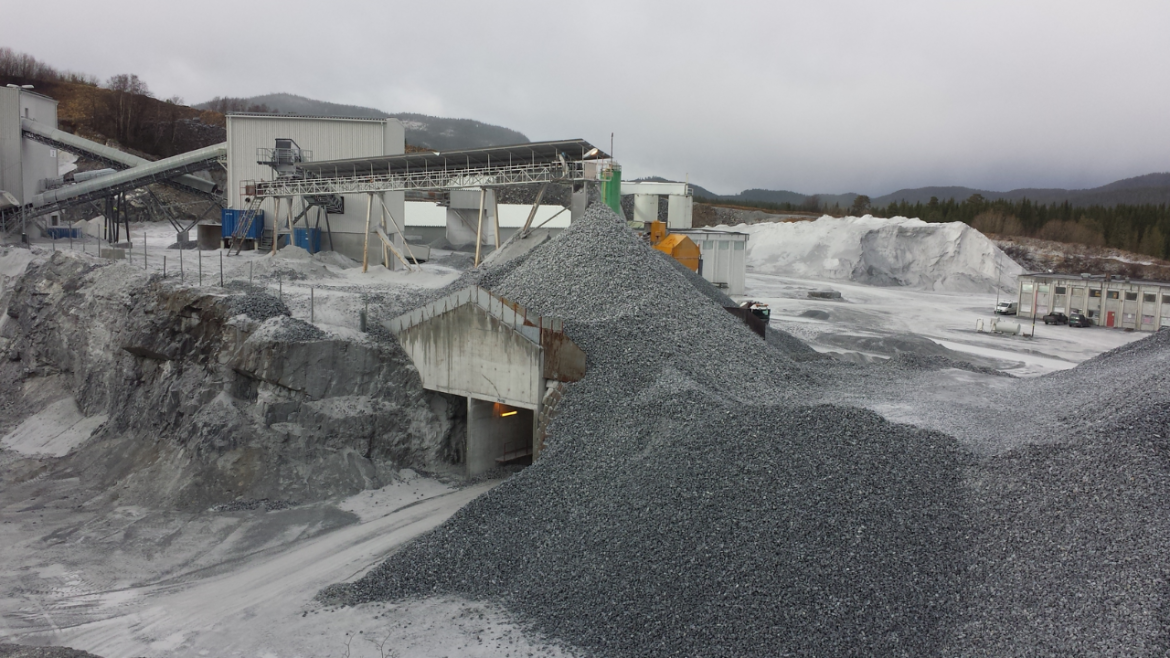Cement manufacturers rely heavily on limestone as their key raw material input. It exists in bulk supplies throughout nature and is essential for producing premium cement. How we process limestone affects every aspect of cement production because it determines cement quality and production efficiency while making it more environmentally friendly. Limestone processing produces feedstock for cement production by executing multiple transformation stages that maintain product consistency and enhance performance. Let’s uncover more useful information on limestone processing right in this short guide.
Understanding Limestone: Composition and Properties
Calcium carbonate (CaCO₃) forms more than 95% of every limestone deposit. This material drives the essential chemical transformations during the cement-making process. Limestone’s physical quality, Mohs scale rating of 3, and its texture affect cement production. The mineral breaks down and processes well because of its softness, which benefits cement manufacturers. Varying limestone qualities like purity level and mineral type influence the final cement qualities. We consider these differences in our processing steps to produce cement with the required features.
Limestone Processing: From Raw Material to Cement Feedstock
The processing of limestone creates the necessary raw material for cement manufacturing operations. The method consists of three actions: breaking the material into smaller chunks and grinding it to powder before sizing it with screens. Large limestone rocks become smaller fragments through crushing before grinding processes them into fine powder. Our screening system separates materials by size to create uniform feedstock for our system. Limestone processing turns raw limestone into a product optimized for cement production. Processing limestone gives cement makers better control over their chemical and physical attributes for making high-quality cement products.
Crushing and Grinding: Preparing Limestone for Cement Clinker
The starting point for working with limestone begins with coarse crushing, which reduces large pieces into smaller sizes. These large machines, called crushers, turn limestone into smaller pieces so it becomes a workable material. At both secondary and fine crushing levels, limestone particles are transformed to meet product specifications needed by the cement production process. Our engineers process this material further by placing it through a Raymond mill to generate smooth particle results. The fine limestone powder boosts cement performance in hydration while helping to create homogenous mixtures.
Limestone and Quicklime in Cement Chemistry
During cement production, limestone undergoes necessary chemical modifications. Heating limestone in a kiln at high temperatures converts calcium carbonate (CaCO3) into calcium oxide (CaO), known as quicklime. The calcination process uses large amounts of energy in an endothermic reaction to make cement clinker. Quicklime fuels the essential chemical reactions that produce cement clinker while controlling how fast it sets and develops strength. Cement manufacturing depends on how quicklime reacts with other materials like silica alumina and iron oxide to create essential cement hydrating minerals.
Limestone adds strength and durability to cement products.
The use of limestone enhances both the strength and long-lasting properties of cement. Limestone helps cement set faster and develop its strength correctly. Its calcium carbonate content acts as a controller for hydration, which lets cement build strength at the ideal pace. When added during cement production, limestone improves durability by making the material less porous. The concrete becomes more damage-resistant and performs better than typical concrete throughout its lifespan. High-purity limestone boosts cement strength since it creates less contamination and supports better chemical reactions in manufacturing.
Sustainability and Efficiency in Limestone Processing
Processing limestone into products uses considerable energy during stage one blasting through stage three heating operations. Lowering energy use is a primary target for cement producers as it helps decrease production expenses and reduces environmental risks. The latest limestone processing technology allows us to use less energy while reducing emissions. Advanced equipment to crush limestone saves significant amounts of energy. Modern emission control systems help control the amount of carbon dioxide released during limestone calcination. Lime producers now use alternative fuel sources and manage their energy better to make limestone production environmentally safer and more efficient.
Conclusion
The manufacture of cement depends heavily on processing limestone. Limestone is the primary source material for cement production, and its handling steps determine how the finished product will perform. The various steps in limestone processing, from elemental composition to quicklime creation, help cement manufacturers produce more reliable and durable materials. Companies developing new limestone handling solutions aim to create better production systems while lowering the environmental impact of cement manufacturing. The cement industry must continue to enhance its use of limestone and process it to meet the rising demand for environmentally friendly construction materials.
